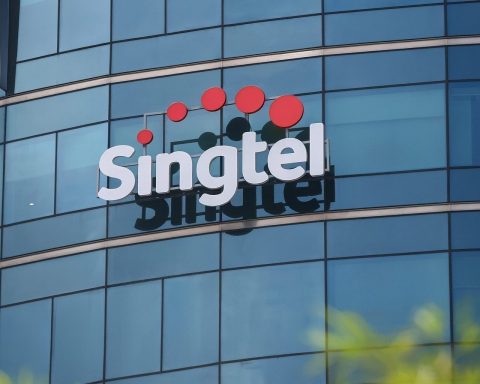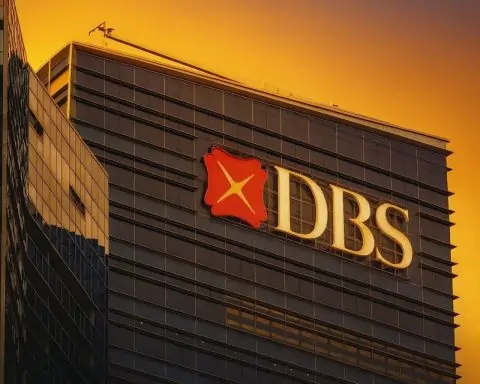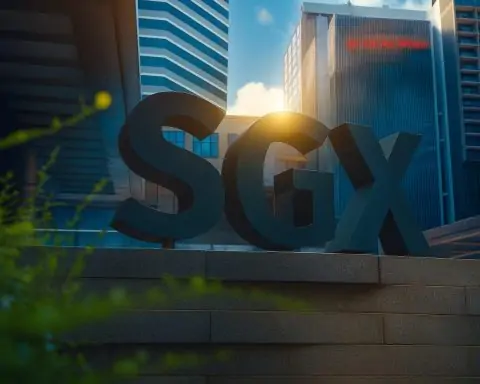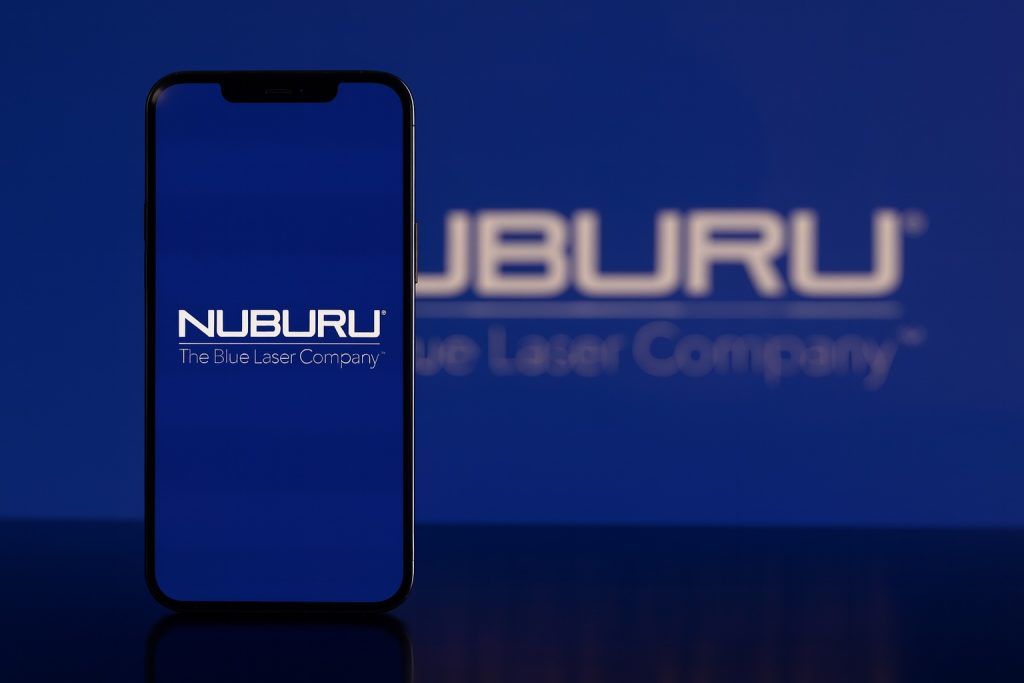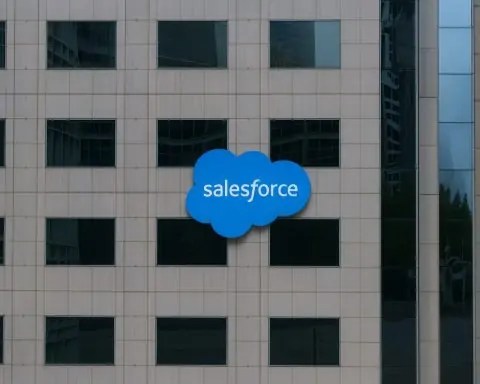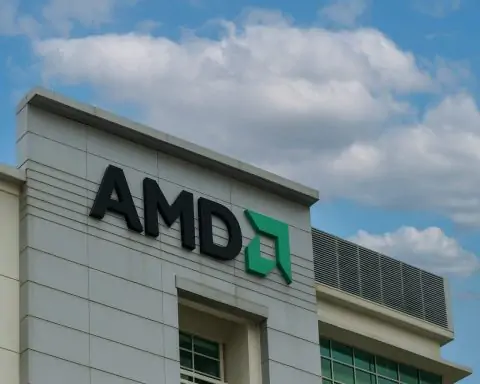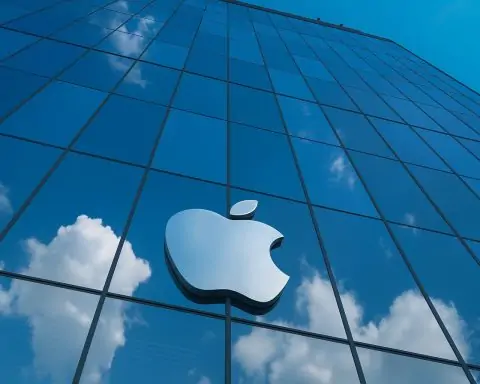- AI Firms Brace for Legal Storms: OpenAI and Anthropic are considering using investor capital to help settle looming multibillion-dollar copyright lawsuits [1]. Insurers warn they lack “enough capacity for (model) providers” to cover AI risks [2], pushing these startups toward “self-insurance.”
- Musk’s xAI $20B Chip Play: Elon Musk’s AI venture xAI is nearing a $20 billion funding round, structured with ~$7.5B equity and $12.5B debt, largely to purchase Nvidia chips [3] [4]. Nvidia itself may invest $2B in the deal [5], underscoring the AI hardware arms race.
- Big Tech & AI Bets: Dell Technologies doubled its 4-year profit growth target (to 15% annually) on “insatiable” demand for AI servers [6] [7] – it counts xAI and CoreWeave as customers. Analysts say Dell’s scale gives it a “volume advantage” in the booming AI infrastructure market [8].
- Cybersecurity Shocks: A ransomware attack forced Jaguar Land Rover into a six-week shutdown, costing UK dealer Vertu up to £5.5M in profits [9]. In Japan, the Qilin gang claimed a hack on Asahi Breweries that halted beer production; ~27GB of data was stolen [10]. And in Australia, two emergency-call outages at Singtel’s Optus (weeks apart) left callers unable to reach help – a failure linked to four deaths [11].
- EVs & Auto Tech Turmoil: Tesla unveiled lower-cost Model Y and Model 3 “Standard” EVs (starting ~$37K–$40K) aimed at broader buyers [12]. But markets weren’t impressed – Tesla stock fell ~4.5%, and even bullish analysts like Dan Ives called the price cuts too shallow [13] [14]. One strategist quipped, “It’s basically a pricing lever and not much of a product catalyst”, noting it may not unlock new demand [15]. Meanwhile in Asia, Vietnam’s push to ban gasoline motorbikes in Hanoi is shaking Honda’s dominance and turbocharging local EV maker VinFast [16].
- Space Tech Milestones: Blue Origin launched its 15th New Shepard space tourism flight on Oct 8, sending six civilians (one repeat flyer) on a suborbital trip [17] [18]. Not to be outdone, SpaceX lofted 28 Starlink satellites on Oct 7 using a Falcon 9 booster flying its 29th mission – just one short of SpaceX’s reuse record [19]. The first stage stuck the landing, underscoring SpaceX’s rapid launch cadence (127 Falcon 9 flights so far this year) [20].
- Major Deals & Investments: SoftBank struck a $5.4 billion deal to buy ABB’s industrial robotics division [21], pivoting back into robotics as CEO Masayoshi Son proclaims a “new era of AI-based robotics” [22]. ABB’s new chief reversed a spin-off plan, seeing more value in SoftBank’s AI and automation heft combined [23]. In Europe, Amazon will invest €1 billion in Belgium by 2027 to expand its cloud and logistics footprint [24].
- Fintech & Crypto Moves: London’s fintech star Revolut announced its first foray into India – launching a UPI-powered payments app with a goal of 20 million users by 2030 [25] [26]. And as crypto markets rebound, companies are racing to offer tokenized stocks (crypto tokens pegged to equities). Regulators and Wall Street are raising alarm bells that these novel assets lack traditional investor protections and could threaten market stability [27].
In-Depth Report
AI & Big Tech: Lawsuits, New Funding, and Soaring Demand
Less than a year after generative AI caught fire, the industry is navigating both explosive growth and rising legal peril. In a sign of the times, OpenAI (maker of ChatGPT) and rival Anthropic are preemptively eyeing their war chests to handle expected copyright lawsuits [28]. With authors and media companies suing over AI training data, both startups may tap investor funds to establish a “captive” insurance vehicle or other reserves for potential settlements [29]. “The insurance sector broadly lacks ‘enough capacity for (model) providers,’” warned Aon’s cyber risk head Kevin Kalinich, noting traditional insurers can’t fully cover the multibillion-dollar liabilities at stake [30]. Indeed, a U.S. judge just approved a $1.5 billion class-action settlement against Anthropic over scraped content [31] – underscoring why AI firms are bracing for hefty payouts.
Even as legal clouds gather, investors’ appetite for AI hasn’t dimmed. Elon Musk’s secretive AI venture xAI is reportedly finalizing a massive financing round, upping its raise to $20 billion to fund a colossal GPU purchase [32]. According to a Bloomberg-sourced report, xAI structured the deal via a special vehicle that will buy cutting-edge Nvidia processors for its “Colossus 2” data center [33] [34]. Notably, Nvidia itself could take a ~$2 billion equity stake [35]. The financing is roughly split $7.5B in equity and $12.5B in debt [36] [37] – reflecting the extraordinary cost of high-end AI hardware. (By comparison, Musk had denied an earlier rumor of raising $10B at a $200B valuation [38].) The move would arm xAI with thousands of top-tier chips as it races to develop an AI to rival OpenAI’s – a bold bet that highlights how “AI compute” has become the new oil for tech upstarts.
Meanwhile, established tech giants are doubling down on AI as a growth engine. Dell Technologies stunned investors on Oct 7 by nearly doubling its long-term profit growth forecasts, citing “insatiable” demand for the server hardware that powers generative AI [39] [40]. The Texas-based company – traditionally a PC supplier – now finds itself a big winner of the AI boom, supplying infrastructure for services like ChatGPT. Dell raised its EPS growth target to 15% annually (from 8%) and revenue growth to ~7–9% (from ~4%) for the next four years [41] [42]. This optimism comes despite fierce competition in AI servers (HPE, Super Micro, etc.) and the high costs of cutting-edge chips. “Dell has a volume advantage due to its scale, established supply chain, and relationships with major buyers, compared to rivals like Super Micro,” notes Jacob Bourne, an analyst at eMarketer [43]. In other words, Dell’s size and partnerships (it counts Musk’s xAI and cloud startup CoreWeave as customers [44]) let it ride the AI wave more profitably than smaller peers – easing investor worries about margin pressures.
It’s not just U.S. firms riding AI momentum. Anthropic – fresh off a $4B investment from Amazon a few weeks ago – announced it will open its first India office in 2026 to meet surging demand [45] [46]. India’s nearly 1 billion internet users and growing tech spending make it a “major battleground for global AI players,” the company said [47]. Anthropic’s chatbot Claude already counts India as its second-largest market (it’s favored for coding help) [48]. CEO Dario Amodei is visiting India to cement partnerships, as both Anthropic and OpenAI prepare local offices amid competition from Google’s upcoming Gemini AI and others [49]. The expansion underscores how emerging markets are becoming key to AI growth – and talent – as firms race to globalize their AI offerings.
Cybersecurity: High-Profile Hacks and Fallout
This week was a stark reminder that as technology advances, so do the threats. In Japan, brewing giant Asahi Group revealed it had been crippled by a ransomware attack in late September that halted beer production nationwide [50]. On Oct 7, the Qilin ransomware gang claimed responsibility, posting proof in the form of 29 leaked internal documents and boasting of 9,300 stolen files (~27 GB of data) [51]. Asahi managed to restart operations at all six major breweries by Oct 2 [52], but the damage was done – and the hackers may still be extorting the firm. (Asahi declined to comment on any ransom demands or negotiations while investigations continue [53].) Cybersecurity experts note Qilin is a “ransomware-as-a-service” outfit that has carried out hundreds of attacks since 2022 [54]. In one particularly grim incident, authorities say a Qilin-led hospital system hack in 2024 contributed to a patient’s death in London [55]. The Asahi breach – disrupting a household-name product – highlights the real-world stakes of cyberattacks, from factory downtime to potential public safety risks.
In Europe, a cyber incident at automaker Jaguar Land Rover (JLR) cascaded into a major business disruption. Starting in late August, JLR was forced to shut down operations for nearly six weeks after a “major” attack on its IT systems [56]. By Oct 7, JLR finally began restarting some factories [57], but the prolonged outage left scars up and down the supply chain. One example: Vertu Motors, a UK dealership group that sells JLR vehicles, warned the hack will wipe as much as £5.5 million ($7.4M) off its annual profit [58] [59]. Vertu said it lost about £2M in September alone when it couldn’t get new JLR inventory or parts due to the factory stoppage [60] [61]. The company’s CEO Robert Forrester noted they’re working with insurers on a possible claim for third-party outage losses [62] – illustrating how cyber incidents can trigger ripple-effect claims across business partners. JLR’s parent, Tata Motors, has not disclosed full details of the breach, but such a lengthy shutdown suggests a severe ransomware or malware event. Industry analysts say it’s one of the auto sector’s worst cyber disruptions to date, underlining the need for stronger digital defenses in manufacturing.
Beyond these, other cyber headlines emerged: The New York Times reported that suspected Chinese state hackers are targeting prominent U.S. law firms for sensitive data (a worrying new front in cyber-espionage). And in Britain, police arrested two individuals over a ransomware attack that exposed children’s data at a London school – a chilling reminder of the human impact when hackers hit softer targets. Each incident different, yet the theme is constant: critical systems – from factories to phone lines – are under siege in the digital age.
Consumer & Telecom Tech: Outages and Oversight
Tech’s intersection with public infrastructure came into stark focus in Australia, where telecommunications provider Optus suffered two catastrophic outages of the national “000” emergency number within a month [63]. The back-to-back glitches (in late September) left thousands of people temporarily unable to reach police, fire, or ambulance services [64]. Tragically, authorities have linked the first outage to four deaths, saying some callers in distress couldn’t get timely aid [65]. This week, Australian Prime Minister Anthony Albanese confronted Singapore’s PM Lawrence Wong – since Singapore’s Singtel owns Optus – demanding accountability for the “deadly” failures [66]. “I understand fully the anger, frustration and outrage at what has happened,” PM Wong empathized, adding that if such an event occurred in Singapore, “I would feel the same” [67]. Singapore’s government (via state fund Temasek) is a major Optus shareholder, and Wong pledged that Singtel/Optus must “act responsibly, comply fully with Australian laws and cooperate with the ongoing inquiry” [68]. Australian regulators are now investigating whether lax maintenance or insufficient backups led to the 000 outages. The incident has sparked calls from some lawmakers for Optus’ CEO to resign and even suggestions the carrier’s license be reviewed [69]. It’s a dramatic example of how a tech failure can literally become a matter of life and death – pressing telecom firms to harden their networks.
In the U.S., regulators continued their crackdown on Chinese telecom gear. The Federal Communications Commission (FCC) is set to vote on tightening rules that further restrict the use of equipment from China’s Huawei and ZTE in American networks [70]. This comes after years of escalating bans on Chinese-made 5G components over espionage fears. The new measures, expected to pass, would close loopholes and likely bar even more devices deemed security risks. Washington’s message to carriers is clear: rip and replace any suspect gear, or face penalties. (Notably, the U.K. this week reiterated its own 2027 deadline for removing Huawei kit from British 5G networks.) The east-west tech decoupling marches on, one policy at a time.
Electric Vehicles & Mobility: Tesla’s Trade-Offs and Shifting Markets
In the electric vehicle realm, Tesla sought to jolt its sales by debuting more “affordable” versions of its two most popular models. At a late Oct 7 launch event, CEO Elon Musk unveiled the Model Y Standard Range and Model 3 Standard Range, each priced about $5,000 below the previous base trims [71] [72]. The new starting prices — $39,990 for the Model Y SUV and $36,990 for the Model 3 sedan [73] — aim to lure budget-conscious buyers who found Tesla’s earlier prices just out of reach. Musk emphasized that after U.S. federal EV credits, effective prices could dip under $30K, which he’s long said is the magic number for mass-market appeal [74] [75]. The Standard models trim some premium features (no fancy glass roof, manual side mirrors, fewer speakers, etc.) but still deliver over 320 miles of range from slightly smaller battery packs [76] [77]. They are available for order now, with deliveries expected in December and January [78].
However, the market’s reaction was tepid. Tesla’s stock tumbled ~4.5% on Oct 8 as analysts digested the news [79]. Many noted that the price cuts were not as steep as anticipated – in fact, without the now-expired U.S. EV tax credit, the new “cheaper” Model 3/Y cost more than what last quarter’s buyers paid [80] [81]. “I’m disappointed the cars were only about $5,000 cheaper than the next trims,” lamented longtime Tesla bull Dan Ives, who had hoped for a more drastic move to stoke demand [82]. Others pointed out that Tesla’s strategy of creating cut-down versions of existing models, rather than introducing an all-new budget EV, carries risks. “It’s basically a pricing lever and not much of a product catalyst,” observed Shay Boloor of Futurum Equities, adding he doesn’t see this unlocking “new demand at scale” for Tesla [83]. Indeed, Tesla is grappling with intensifying competition in the sub-$40K EV segment – from GM’s coming Chevy Equinox EV (~$30K) to Hyundai’s Ioniq 5 and a wave of Chinese models. “I just don’t know that this is enough… In my opinion, Tesla needs a sub-$30k EV,” agreed Shawn Campbell of investment firm Camelthorn, reflecting a broader view on Wall Street [84] [85].
One analyst used a colorful metaphor to describe Tesla’s pivot: “For the market, this is Tesla dropping its Steve Jobs turtleneck and slipping into a Walmart hoodie,” quipped Michael Ashley Schulman, CIO at Running Point [86]. “It’s no longer the cool rebel at the edge of innovation – it’s the establishment trying to play both Tesla and Toyota at once.” [87] In other words, Tesla’s brand – once synonymous with bleeding-edge tech and premium pricing – is at risk of dilution as it chases volume and toes the line between high-end and mainstream. Elon Musk himself acknowledged over the summer that many people want a Tesla, but “just don’t have enough money in the bank” to buy one [88]. The coming quarters will show whether these slightly-more-affordable Models can reignite Tesla’s growth or if deeper changes (or new models) will be needed.
Globally, the EV transition continues to upend traditional players. In Vietnam, a rapid government push to phase out gasoline motorbikes has put Honda’s market dominance in jeopardy. Motorbikes are the lifeblood of Vietnamese transportation, and Honda has long held ~80% share in that country. But Hanoi’s leadership issued a directive banning petrol-powered two-wheelers from downtown Hanoi within a year (and expanding city-wide by 2028) [89] [90]. The news sent Honda’s local sales into a tailspin – August motorbike sales plunged 22% month-on-month after the ban was announced [91]. Consumers are now looking to switch to electric scooters en masse. Homegrown EV startup VinFast, better known for its electric cars, also produces e-motorbikes and stands to benefit hugely from the policy. A recent survey found over half of Vietnamese riders plan to opt for an electric bike next, with one-third specifically eyeing VinFast models [92] [93]. VinFast, which listed on the Nasdaq earlier this year, said it delivered 71,000 e-scooters in Vietnam recently [94] and is ramping up production. Honda and other Japanese manufacturers are scrambling to roll out their own electric two-wheelers, but they’ve criticized Hanoi’s timeline as too aggressive [95]. The shake-up in Vietnam mirrors trends in other emerging markets where local EV players (two- and three-wheelers) are challenging incumbents. From India to Indonesia, low-cost EV bikes and rickshaws are gaining ground thanks to government incentives and urban clean-air rules. For Honda, known as the world’s largest motorbike maker, Vietnam’s pivot is a warning: adapt quickly to electrification or risk losing your grip on key markets.
Space, Startups & Beyond: Reaching New Heights
In space news, the past two days saw triumphs in both suborbital tourism and orbital deployment. Blue Origin, the private space firm founded by Jeff Bezos, successfully flew its NS-36 mission on October 8 – the company’s 36th New Shepard rocket flight and the 15th with human passengers [96] [97]. Liftoff from West Texas occurred at 9:30 a.m. ET, carrying six civilians to the edge of space and back [98]. The eclectic crew included a robotics researcher, a media entrepreneur, and a Ukrainian businessman, among others [99] [100]. They experienced a few minutes of weightlessness and glimpsed the Earth’s curvature before their capsule safely parachuted down ~10 minutes later. This launch is part of Blue Origin’s renewed push in space tourism after a year-long hiatus – the company is also preparing its much larger New Glenn orbital rocket for a debut next year. With NS-36, Blue Origin inches closer to equaling its rival Virgin Galactic in suborbital flights, and it continues to demonstrate the viability of reusable rocket tourism (the same New Shepard booster has flown multiple times). Notably, Blue Origin still hasn’t disclosed its ticket prices, but market demand appears strong as more affluent adventurers queue for their few minutes in space [101].
Meanwhile, SpaceX kept up its frenetic satellite launch pace. Late on Oct 7, a Falcon 9 rocket from Vandenberg Space Force Base in California delivered 28 Starlink internet satellites to low Earth orbit [102] [103]. The mission was remarkable as the booster (tail number B1071) was on its 29th flight, making it SpaceX’s second-most flown rocket – just one shy of the record 30 flights held by another booster [104] [105]. About 8½ minutes after launch, the first stage nailed a landing on the drone ship “Of Course I Still Love You” in the Pacific [106], marking SpaceX’s 500th rocket landing overall this year (a testament to how routine this once-crazy idea has become). The Starlink deployment means SpaceX has now launched 127 Falcon 9 missions in 2025 alone [107] – over 70% of them dedicated to building out the Starlink mega-constellation, which now boasts more than 8,500 active satellites beaming broadband worldwide [108]. The company is averaging a launch every 2–3 days, an unprecedented cadence. SpaceX’s near-term focus is on using these reusable Falcon workhorses to expand Starlink (especially in Asia and Africa) while it readies the next Starship test flight. The Falcon 9’s reliability and rapid turnaround have fundamentally changed the satellite industry, lowering costs and fueling a surge in orbital projects.
Outside the limelight of Big Tech, innovative startups are also making waves. On the legal tech front, San Francisco’s EvenUp raised a hefty $150 million Series E round to scale its AI-driven platform for personal injury law [109]. The startup – now valued around $2 billion – uses machine learning on thousands of past cases to help lawyers draft claims and predict settlement values. The new funding (led by Bessemer Ventures) will help EvenUp expand its AI tools that have already helped resolve 200,000+ cases and $10B in settlements [110]. Meanwhile, in the crypto-finance realm, Bermuda-based Meanwhile (yes, that’s the company’s name) secured $82 million to grow its Bitcoin-denominated life insurance offerings [111]. Co-led by Bain Capital Crypto, the round will fuel Meanwhile’s efforts to offer insurance policies where premiums and payouts are in Bitcoin – an unusual model that appeals to crypto-rich clients seeking to hedge against fiat currency inflation [112] [113]. The startup claims to be the first licensed insurer doing this, highlighting how blockchain is seeping into traditional financial products.
It was also a banner period for robotics and AI consolidation. In a blockbuster M&A deal, Japan’s SoftBank Group agreed to acquire the entire robotics division of Swiss engineering giant ABB for $5.4 billion [114]. The purchase, announced Oct 8, hands SoftBank a major foothold in industrial automation – from factory robot arms to logistics bots – and marks CEO Masayoshi Son’s return to bold bets after a quieter period. “ABB and SoftBank share the perspective that the world is entering a new era of AI-based robotics,” said ABB CEO Morten Wierod, explaining that combining ABB’s leading robots with SoftBank’s AI prowess will best “shape this era together.” [115] The sale is a strategic about-face for ABB, which had originally planned to spin off and IPO the robotics unit. But slumping sales and profits in that division, plus SoftBank’s all-cash allure, sealed the deal [116] [117]. SoftBank’s stock, already riding high from investor enthusiasm in AI, ticked up on the news [118]. The transaction is expected to close in 2026 pending approvals [119]. For SoftBank, which previously dabbled in robotics with the humanoid Pepper and stakes in AutoStore and others [120], this is a statement investment that it wants to be a leader in the AI + hardware revolution transforming manufacturing.
Other notable tech investments include Amazon’s plan to pump €1 billion into new data centers and logistics facilities in Belgium through 2027 [121] – part of a broader cloud expansion in Europe. And London-based fintech Revolut is betting big on India: it’s launching a localized payments app tied into UPI (India’s ubiquitous mobile payments network) and Visa, starting with a 350,000-user waitlist [122] [123]. Revolut has tailored its tech to meet India’s strict data-localization rules at a cost of £40M, and sees the market as crucial for reaching its ambitious 20 million customers by 2030 [124]. This comes as India’s digital payments usage is exploding and global players from WhatsApp Pay to Google are vying for a piece.
Finally, in the crypto world, a new trend is raising eyebrows on Wall Street: tokenized stocks. Trading platforms like Coinbase, Robinhood and Gemini are rolling out services that let users buy crypto tokens representing shares of real stocks (like Apple or Tesla) [125] [126]. While this can democratize access (you could buy a fraction of a pricey stock via tokens), regulators warn it blurs the line between securities and crypto. This week experts cautioned that tokenized stocks often carry zero shareholder rights – no voting power, no dividend guarantees – and could introduce volatility or even systemic risks if widely adopted [127] [128]. The industry, emboldened by a pro-crypto stance from U.S. leadership [129] [130], is pushing ahead quickly, with Europe as a testing ground. But traditional exchanges and the SEC are pushing back, worried about oversight and investor protection. Expect this to be an area of intense scrutiny in coming months, as finance’s old guard and crypto’s new disruptors collide.
In all, the past 48 hours in tech have spanned the gamut – from AI breakthroughs and big-money deals to cautionary tales of security and regulation. It’s a vivid snapshot of a sector in overdrive, where innovation races ahead at breakneck speed, even as society and industry grapple with the consequences. As one week’s events show, technology today is truly global and interwoven: an outage in Sydney can prompt action in Singapore; a chip deal in California can ripple through stock markets in Tokyo; a startup in Bermuda can rethink insurance everywhere. Buckle up – if these two days are any indication, the rest of 2025 promises an even more exciting (and at times tumultuous) ride in the world of tech.
Sources: Reuters, Space.com, TechStartups, etc. [131] [132] [133] [134] [135] [136]
References
1. www.reuters.com, 2. www.reuters.com, 3. www.reuters.com, 4. www.reuters.com, 5. www.reuters.com, 6. www.reuters.com, 7. www.reuters.com, 8. www.reuters.com, 9. www.reuters.com, 10. www.reuters.com, 11. www.reuters.com, 12. www.reuters.com, 13. www.reuters.com, 14. www.reuters.com, 15. www.reuters.com, 16. www.reuters.com, 17. www.space.com, 18. www.space.com, 19. www.space.com, 20. www.space.com, 21. www.reuters.com, 22. www.reuters.com, 23. www.reuters.com, 24. www.reuters.com, 25. www.reuters.com, 26. www.reuters.com, 27. www.reuters.com, 28. www.reuters.com, 29. www.reuters.com, 30. www.reuters.com, 31. www.reuters.com, 32. www.reuters.com, 33. www.reuters.com, 34. www.reuters.com, 35. www.reuters.com, 36. www.reuters.com, 37. www.reuters.com, 38. www.reuters.com, 39. www.reuters.com, 40. www.reuters.com, 41. www.reuters.com, 42. www.reuters.com, 43. www.reuters.com, 44. www.reuters.com, 45. www.reuters.com, 46. www.reuters.com, 47. www.reuters.com, 48. www.reuters.com, 49. www.reuters.com, 50. www.reuters.com, 51. www.reuters.com, 52. www.reuters.com, 53. www.reuters.com, 54. www.reuters.com, 55. www.reuters.com, 56. www.reuters.com, 57. www.reuters.com, 58. www.reuters.com, 59. www.reuters.com, 60. www.reuters.com, 61. www.reuters.com, 62. www.reuters.com, 63. www.reuters.com, 64. www.reuters.com, 65. www.reuters.com, 66. www.reuters.com, 67. www.reuters.com, 68. www.reuters.com, 69. www.reuters.com, 70. www.reuters.com, 71. www.reuters.com, 72. www.reuters.com, 73. www.reuters.com, 74. www.reuters.com, 75. www.reuters.com, 76. www.reuters.com, 77. www.reuters.com, 78. www.reuters.com, 79. www.reuters.com, 80. www.reuters.com, 81. www.reuters.com, 82. www.reuters.com, 83. www.reuters.com, 84. www.reuters.com, 85. www.reuters.com, 86. www.reuters.com, 87. www.reuters.com, 88. www.reuters.com, 89. www.reuters.com, 90. www.reuters.com, 91. www.reuters.com, 92. www.reuters.com, 93. www.reuters.com, 94. www.reuters.com, 95. www.reuters.com, 96. www.space.com, 97. www.space.com, 98. www.space.com, 99. www.space.com, 100. www.space.com, 101. www.space.com, 102. www.space.com, 103. www.space.com, 104. www.space.com, 105. www.space.com, 106. www.space.com, 107. www.space.com, 108. www.space.com, 109. techstartups.com, 110. techstartups.com, 111. techstartups.com, 112. techstartups.com, 113. techstartups.com, 114. www.reuters.com, 115. www.reuters.com, 116. www.reuters.com, 117. www.reuters.com, 118. www.reuters.com, 119. www.reuters.com, 120. www.reuters.com, 121. www.reuters.com, 122. www.reuters.com, 123. www.reuters.com, 124. www.reuters.com, 125. www.reuters.com, 126. www.reuters.com, 127. www.reuters.com, 128. www.reuters.com, 129. www.reuters.com, 130. www.reuters.com, 131. www.reuters.com, 132. www.reuters.com, 133. www.reuters.com, 134. www.reuters.com, 135. www.reuters.com, 136. www.reuters.com



